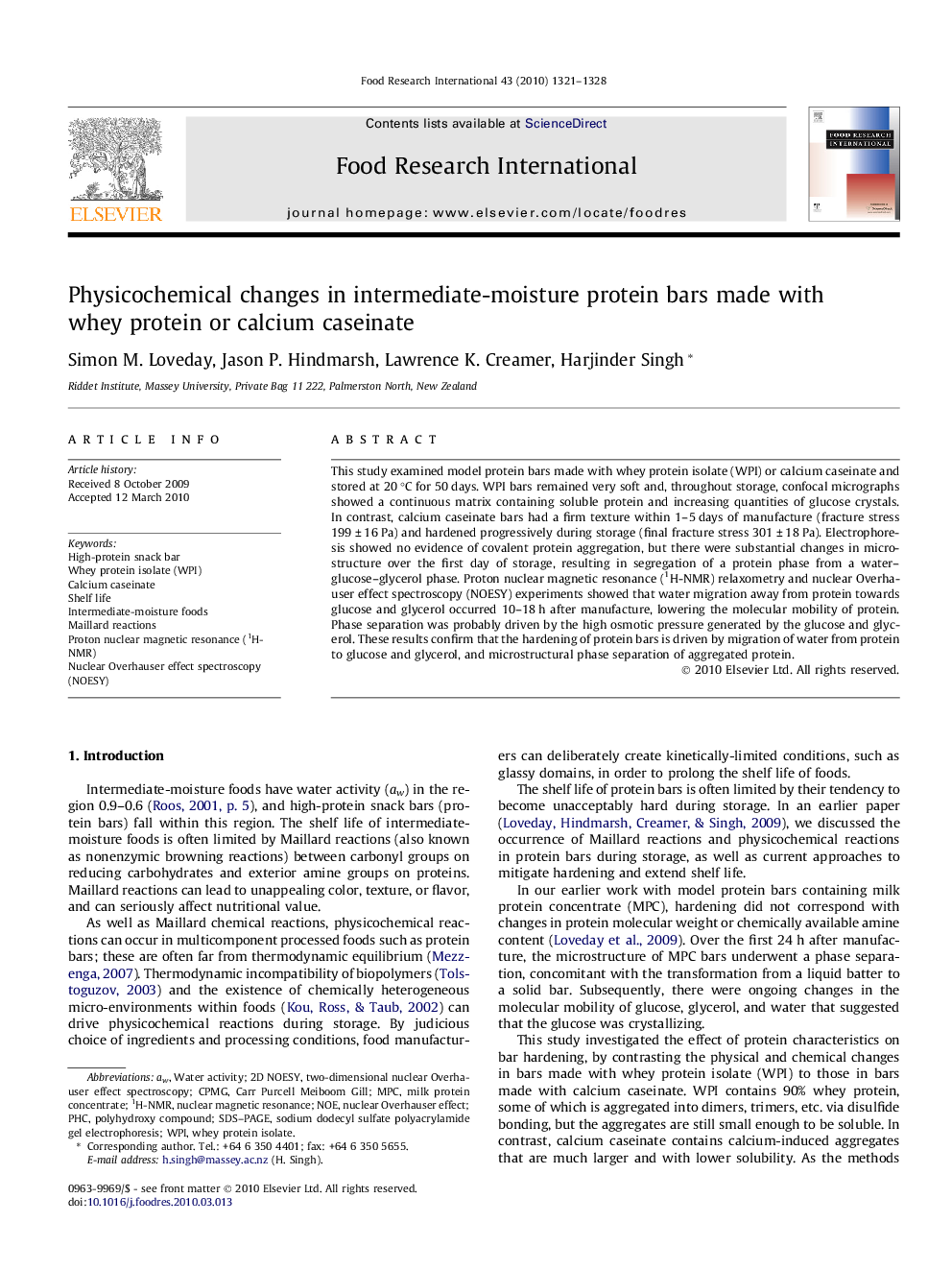| Article ID | Journal | Published Year | Pages | File Type |
|---|---|---|---|---|
| 4562598 | Food Research International | 2010 | 8 Pages |
This study examined model protein bars made with whey protein isolate (WPI) or calcium caseinate and stored at 20 °C for 50 days. WPI bars remained very soft and, throughout storage, confocal micrographs showed a continuous matrix containing soluble protein and increasing quantities of glucose crystals. In contrast, calcium caseinate bars had a firm texture within 1–5 days of manufacture (fracture stress 199 ± 16 Pa) and hardened progressively during storage (final fracture stress 301 ± 18 Pa). Electrophoresis showed no evidence of covalent protein aggregation, but there were substantial changes in microstructure over the first day of storage, resulting in segregation of a protein phase from a water–glucose–glycerol phase. Proton nuclear magnetic resonance (1H-NMR) relaxometry and nuclear Overhauser effect spectroscopy (NOESY) experiments showed that water migration away from protein towards glucose and glycerol occurred 10–18 h after manufacture, lowering the molecular mobility of protein. Phase separation was probably driven by the high osmotic pressure generated by the glucose and glycerol. These results confirm that the hardening of protein bars is driven by migration of water from protein to glucose and glycerol, and microstructural phase separation of aggregated protein.
